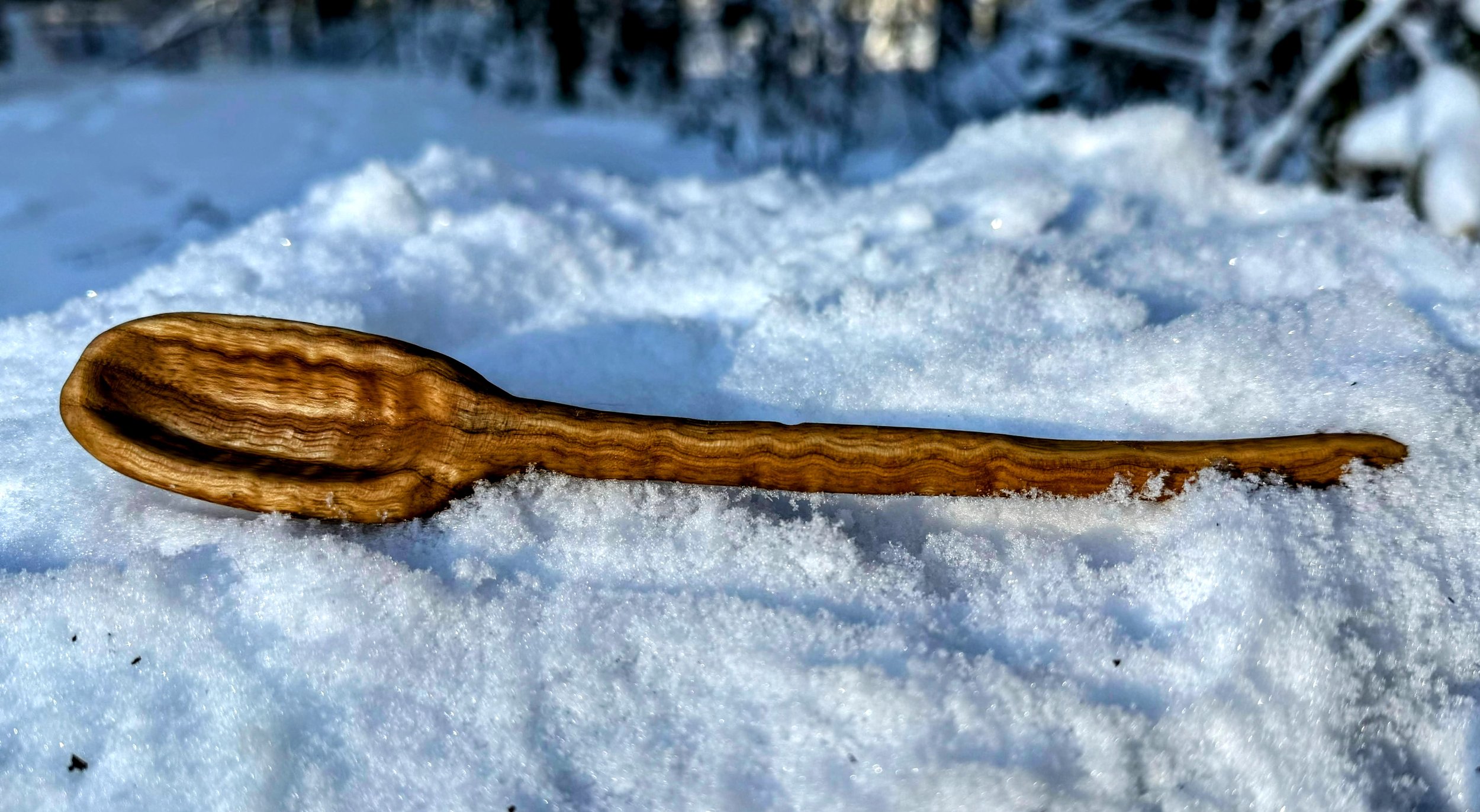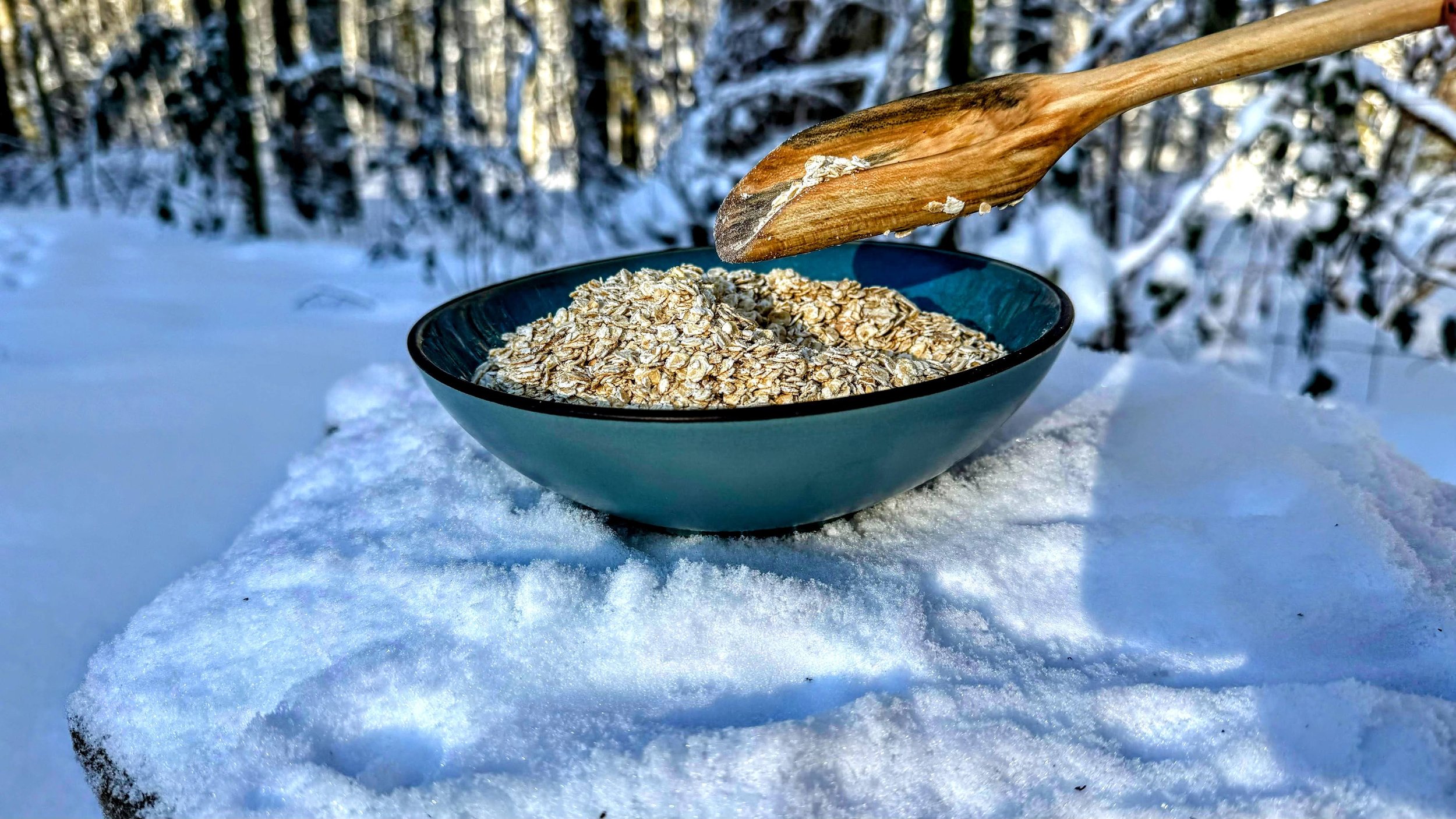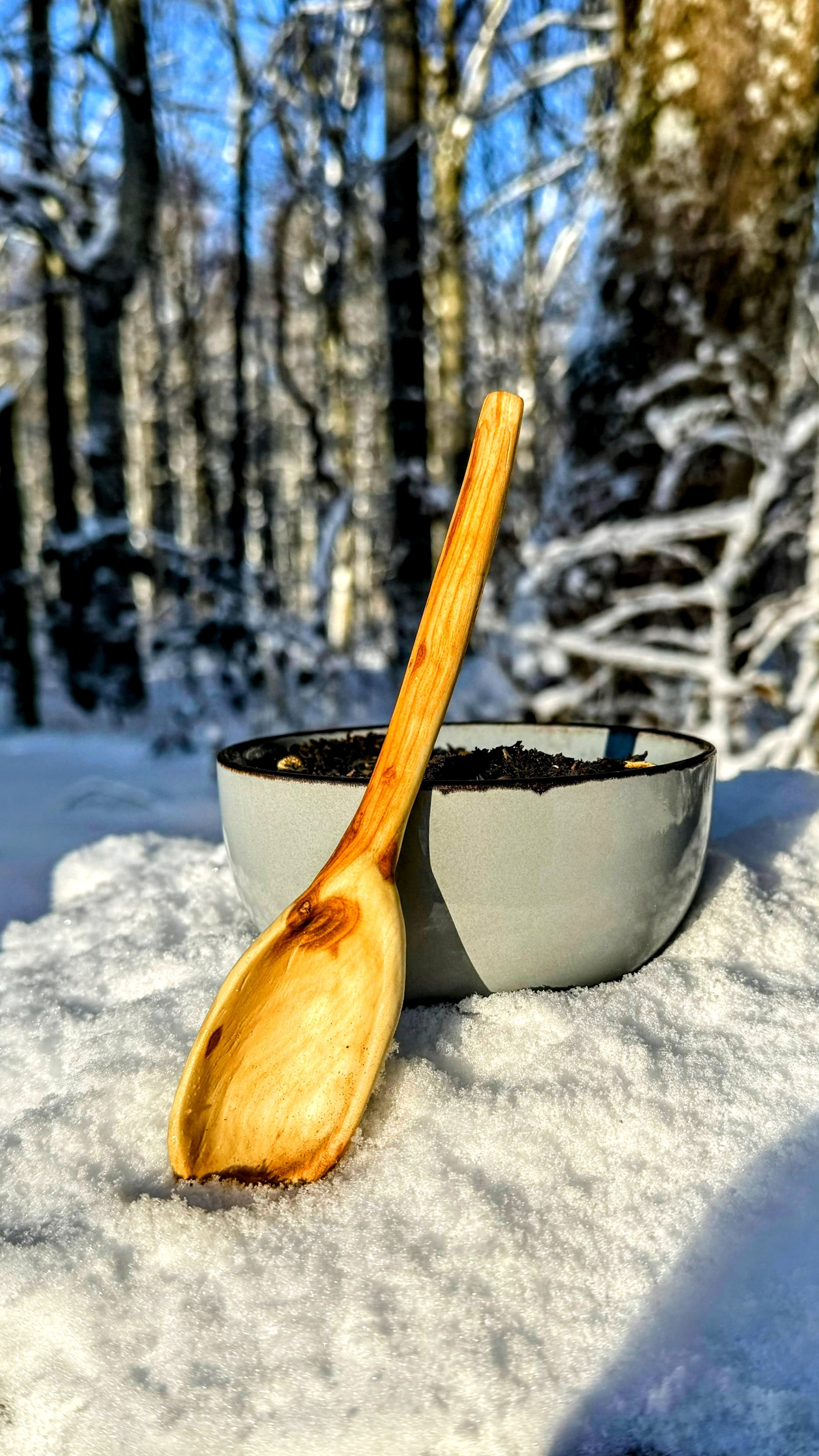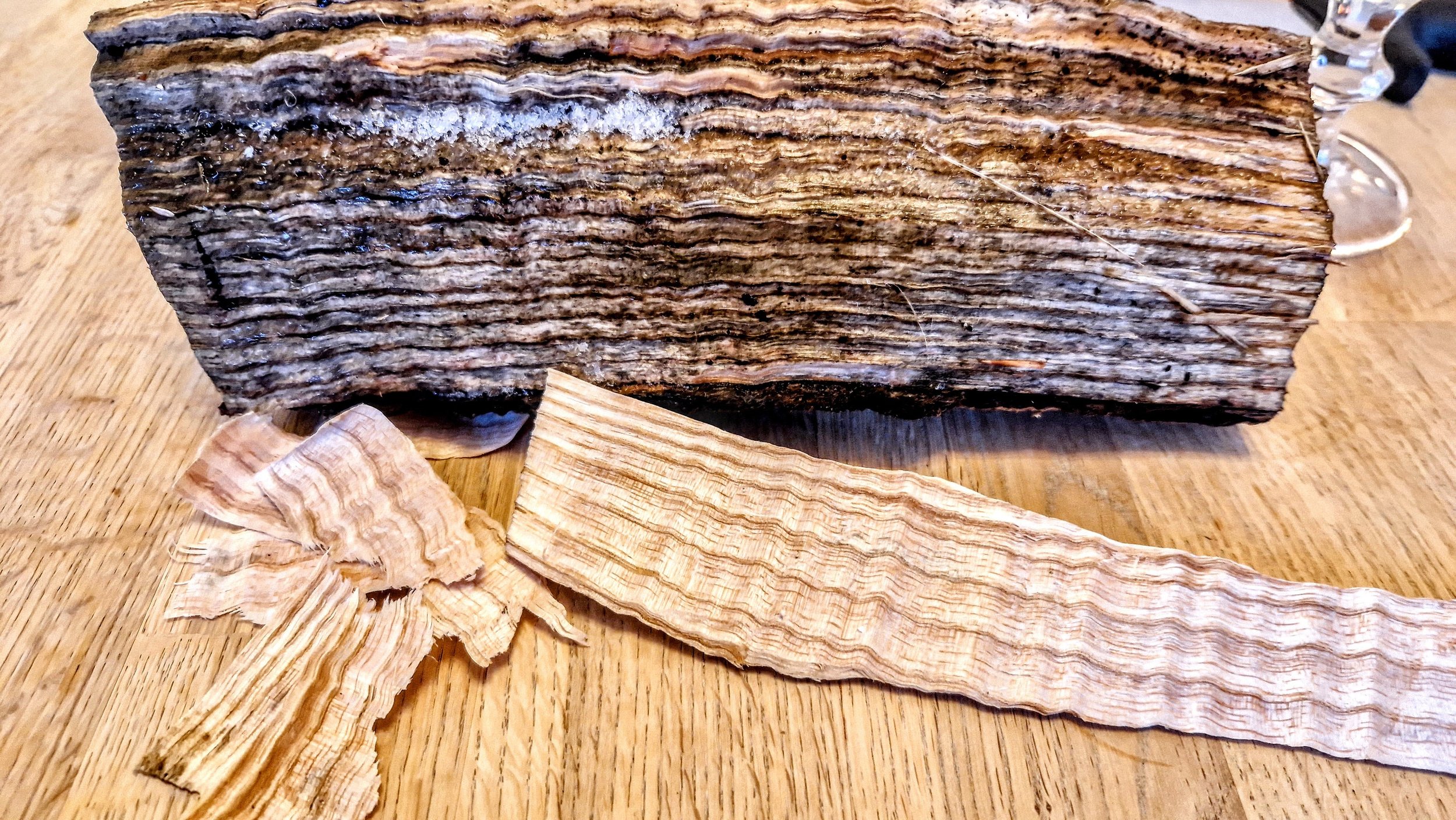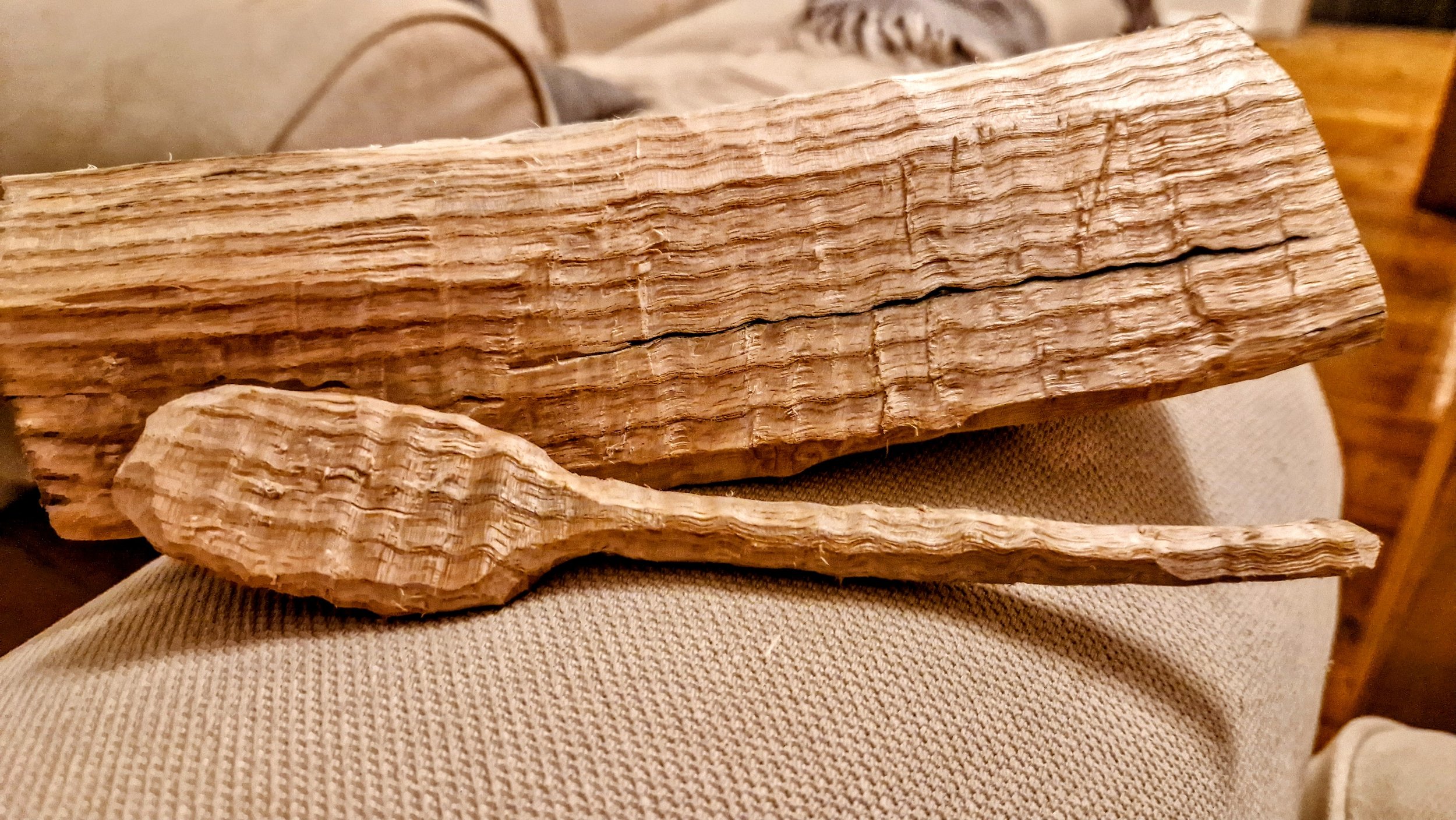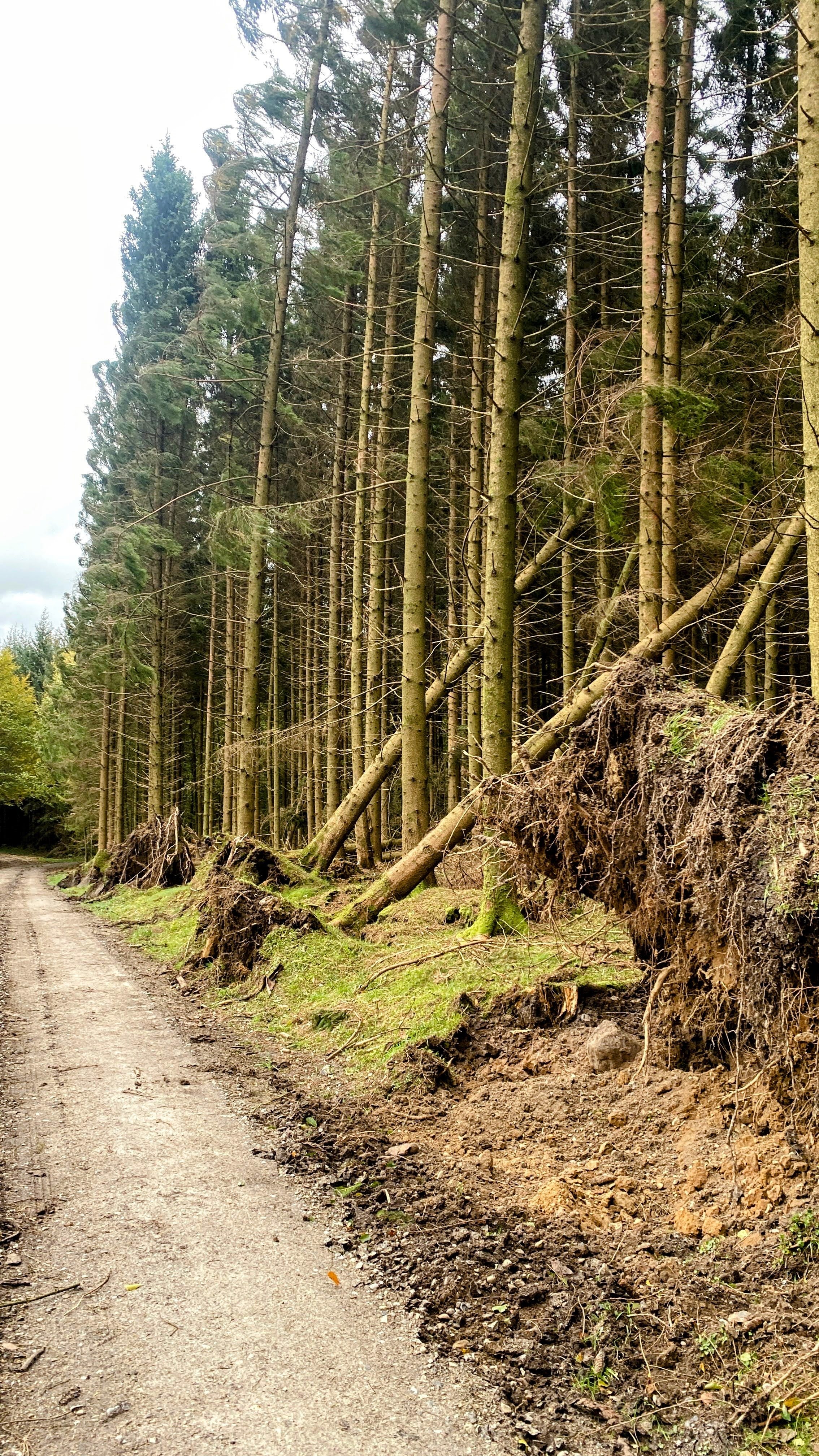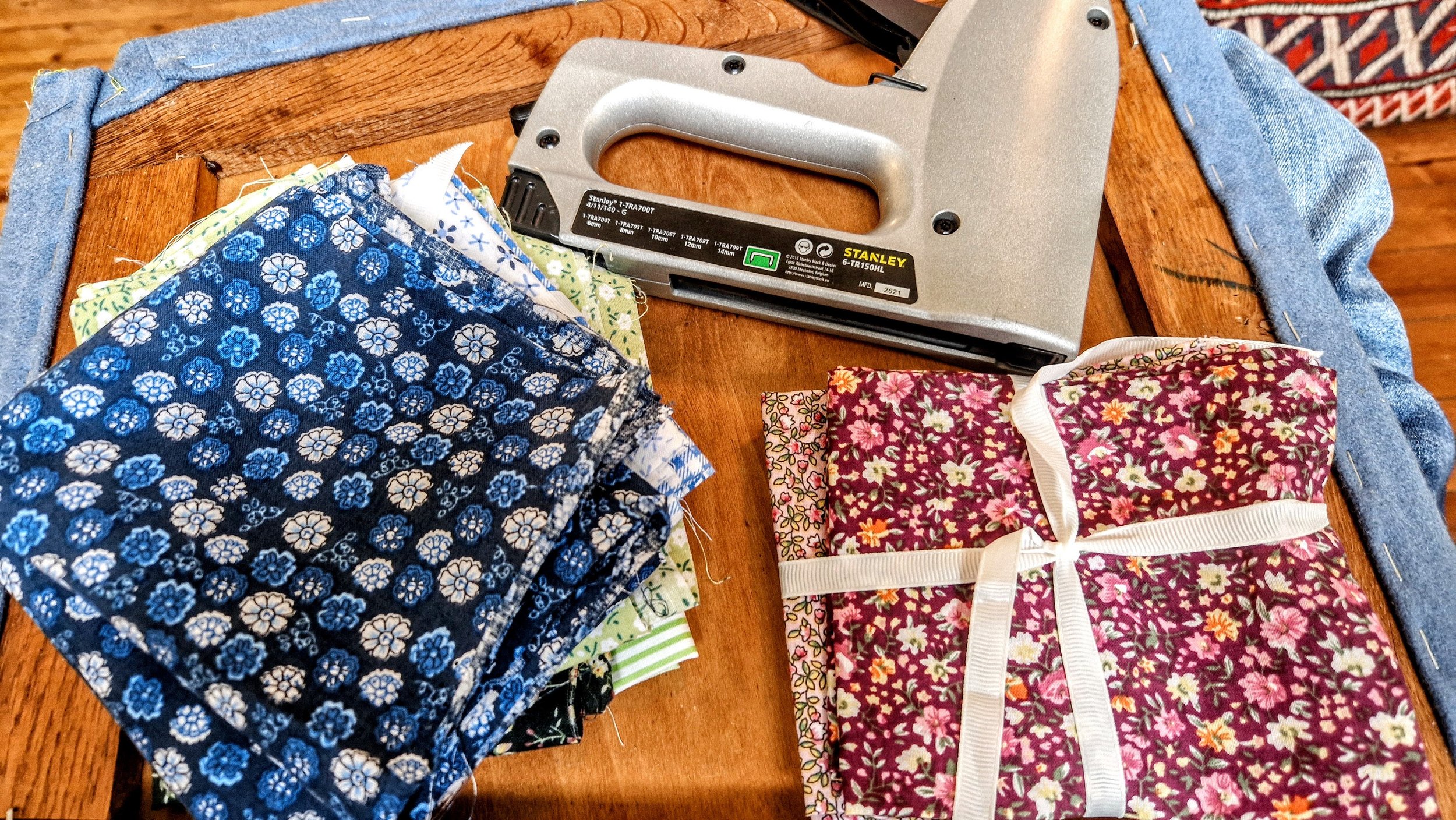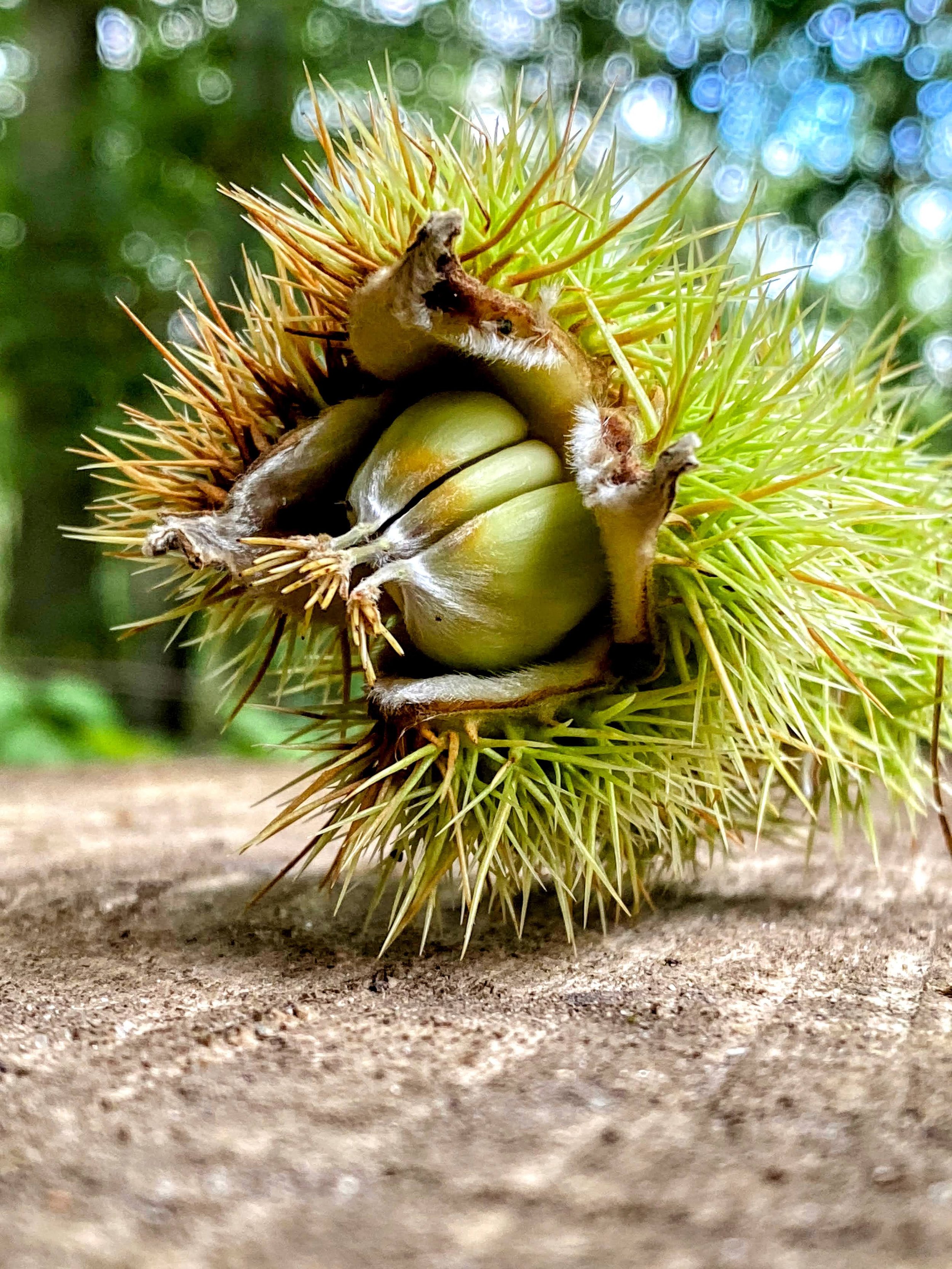The Craft of Whittling Our Wooden Spoons
In the stillness of frosty days, with the gentle purr of a cat in our laps and the comforting crackle of the fireplace, we find solace in the age-old craft of whittling spoons from the curious pieces of wood in our stack. Each spoon begins as a rugged piece of nature and slowly takes form under the careful dance of our knives, no two ever alike.
From left to right, our latest “winter collection” tells a tale of the woods from which they came: the small and minimalist hazel salt spoon; the chatoyant beech honey spoon, its grain swirling like the eddies in a stream; the dark-spotted maple scoop, a testament to the speckled beauty of its origin; the smooth cherry sugar spoon, with round spots as deep as the cherries it once bore; and another spotted maple spoon, its twin in wood but unique in story.
Our method is simple. We shun the use of any tools besides our knives, allowing the wood's natural curves and bends to guide our hands. The result is a collection of spoons that boast a rustic, trollish charm. We celebrate the textures, leaving some parts rugged with a coarser sandpaper grit, while others become smooth, highlighting the wood's innate beauty.
Once carved, a dab of whatever cooking oil we have on hand is enough to seal the wood, leaving a subtle sheen and protection. These spoons don't just live in a drawer; they're an active part of our kitchen, called upon for service, only to be refreshed with a new coat of oil from time to time.
Diving deeper into one creation, our beech honey spoon is a prime example of purpose meeting natural beauty. It was a gnarly piece of wood that caught our eye, its grain fiery and undulating. It begged to be transformed into something that would both showcase and utilize its striking patterns. The honey spoon was a fitting choice, becoming a vessel for the golden nectar it would often cradle. Alongside it, a whimsical saber was born for Bear, ensuring even the smallest offcuts spark imagination.




